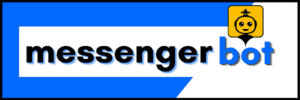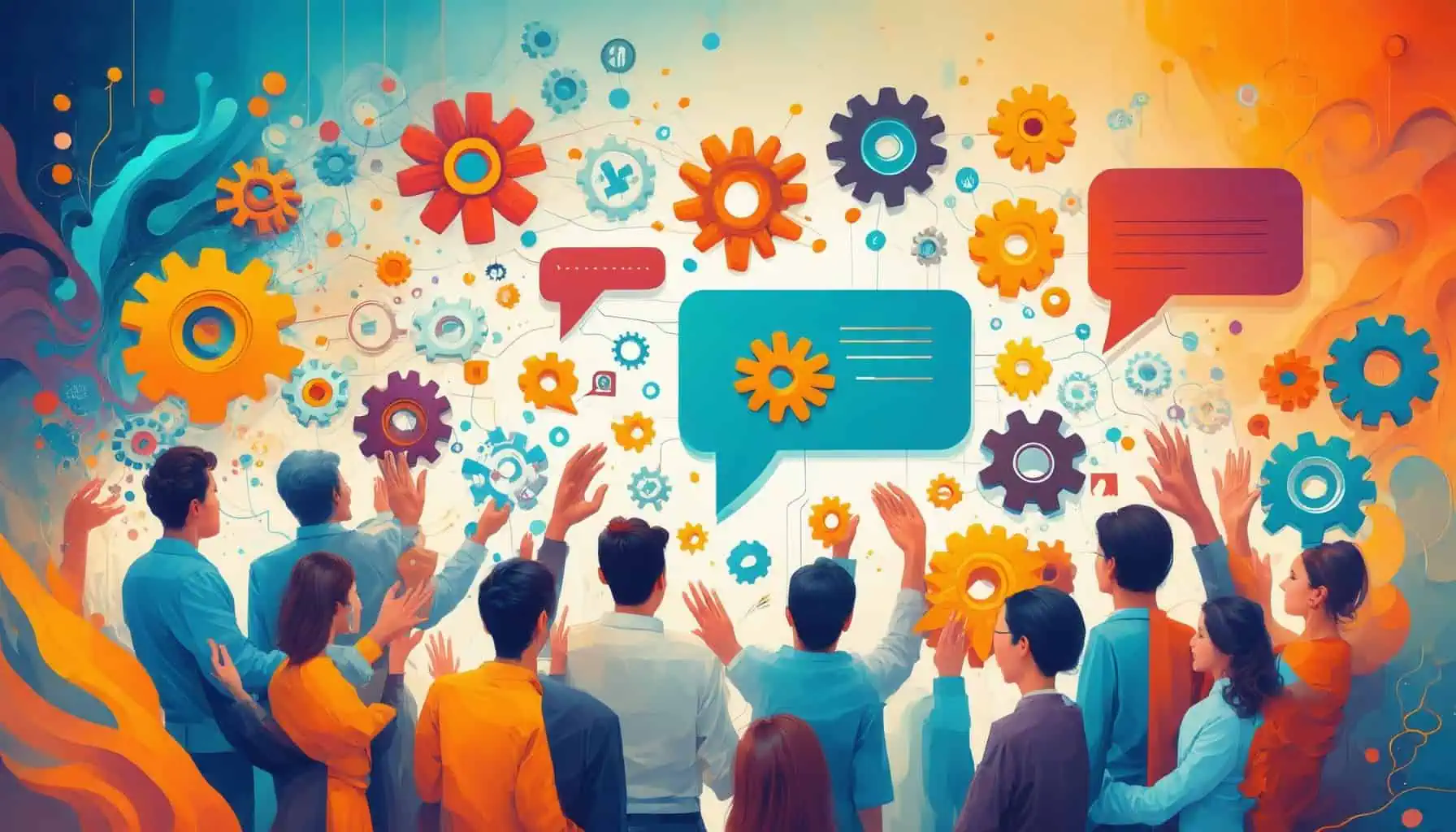Key Takeaways
- Chatbot source code is essential for building effective chatbots, influencing their performance and user interaction.
- Explore GitHub for top chatbot source code projects, including Rasa and Microsoft Bot Framework, to kickstart your development.
- Utilize free chatbot source code from reliable platforms to save time and enhance your programming skills in Python.
- Understanding key components like NLP and database management is crucial for developing robust Python chatbots.
- Integrate HTML and Python for dynamic chatbot functionality, improving user engagement on your website.
- Be aware of common constraints in chatbot development, including technical limitations and data privacy concerns, to ensure successful implementation.
Are you ready to dive into the fascinating world of chatbots? In this article, we will explore the essential chatbot source code that serves as the backbone of chatbot development. Understanding what chatbot source code is and its significance is crucial for anyone looking to create their own chatbot. We will guide you through the process of finding chatbot source code on GitHub, showcasing top repositories and projects that can kickstart your journey. Additionally, we will uncover where to access free chatbot source code online, highlighting the benefits of leveraging these resources. If you’re particularly interested in Python, we’ll delve into popular Python chatbot projects, analyzing their source code to help you grasp key components. Furthermore, we will discuss how to create a chatbot using HTML source code and the best practices for utilizing Python chatbot code effectively. Finally, we will address common constraints in developing a chatbot project and provide strategies to overcome these challenges. Get ready to unlock the potential of chatbot development with practical insights and valuable resources!
What is chatbot source code and why is it important?
Chatbot source code is the underlying programming that enables a chatbot to function effectively. It encompasses the algorithms, scripts, and frameworks that dictate how the chatbot interacts with users, processes information, and delivers responses. Understanding chatbot source code is crucial for developers and businesses alike, as it directly influences the performance and capabilities of the chatbot project.
Understanding the Basics of Chatbot Source Code
The foundation of any successful chatbot lies in its source code. This code is typically written in programming languages such as Python, JavaScript, or PHP, and it defines the chatbot’s behavior, responses, and integration with various platforms. For instance, a well-structured Python chatbot source code can facilitate natural language processing, enabling the bot to understand and respond to user queries more effectively. By leveraging open-source libraries and frameworks, developers can enhance their chatbot projects, making them more robust and versatile.
The Role of Source Code in Chatbot Development
Source code plays a pivotal role in chatbot development, as it determines how well the bot can engage with users and fulfill its intended purpose. A well-written source code allows for seamless integration with messaging platforms like Facebook Messenger, enhancing user experience through automated responses and workflow automation. Additionally, the source code can be modified and optimized over time, ensuring that the chatbot evolves alongside user needs and technological advancements. For those interested in exploring chatbot source code, platforms like GitHub offer a plethora of repositories where developers share their projects, providing valuable resources for learning and inspiration.

How can I find chatbot source code on GitHub?
Finding chatbot source code on GitHub is a straightforward process that opens up a world of possibilities for developers and enthusiasts alike. GitHub hosts a plethora of repositories containing various chatbot projects, making it an invaluable resource for anyone looking to enhance their own chatbot development journey.
Exploring Chatbot Source Code GitHub Repositories
To effectively explore chatbot source code GitHub repositories, start by using specific search terms related to your interests. For instance, searching for “chatbot” combined with programming languages like “Python” can yield targeted results. Here are some tips to navigate GitHub:
- Use Filters: GitHub allows you to filter repositories by language, stars, and recent updates. This helps you find the most relevant and actively maintained projects.
- Check ReadMe Files: A well-documented ReadMe file provides essential information about the project, including setup instructions and usage examples, which can be crucial for understanding how to implement the code.
- Explore Forks: Forked repositories can offer variations of the original project, often with enhancements or bug fixes that might suit your needs better.
Utilizing these strategies will not only help you find quality chatbot source code but also inspire you to contribute to existing projects or start your own chatbot project.
Top GitHub Projects for Chatbot Development
Here are some standout GitHub projects that can kickstart your chatbot development journey:
- Rasa: An open-source framework for building conversational AI, Rasa provides a robust platform for developing chatbots using Python.
- Microsoft Bot Framework: This framework offers tools and services to build intelligent bots that can interact with users across multiple channels.
- Chatbot UI: A customizable chatbot interface that can be easily integrated into your applications, providing a user-friendly experience.
These projects not only showcase the versatility of chatbot source code but also provide a solid foundation for your own chatbot project. By leveraging these resources, you can enhance your skills and create effective chatbots that meet user needs.
Where can I access free chatbot source code?
Accessing free chatbot source code is a game-changer for developers and businesses looking to enhance their digital communication strategies. By leveraging existing code, you can save time and resources while still creating a robust chatbot project. Here’s how to find quality free chatbot source code online.
Finding Free Chatbot Source Code Online
There are numerous platforms where you can find free chatbot source code. Here are some of the most reliable sources:
- GitHub: This is the go-to platform for developers. You can search for chatbot source code GitHub repositories that offer a variety of projects, from simple bots to complex AI-driven systems.
- Open Source Communities: Websites like Open Source Initiative and CodeProject host numerous projects where developers share their chatbot source code.
- Forums and Developer Communities: Platforms like Stack Overflow and Reddit often have threads where developers share their own chatbot projects and source code.
Benefits of Using Free Chatbot Source Code
Utilizing free chatbot source code comes with several advantages:
- Cost-Effective: You can significantly reduce development costs by using existing code instead of starting from scratch.
- Learning Opportunity: Analyzing and modifying free source code can be an excellent way to learn about chatbot development and improve your programming skills, especially in Python.
- Community Support: Many open-source projects have active communities that can provide support and updates, ensuring your chatbot remains functional and up-to-date.
By exploring these resources and understanding the benefits, you can effectively kickstart your chatbot project and enhance your digital communication capabilities.
What are some examples of chatbot code in Python?
Python has emerged as a popular programming language for developing chatbots due to its simplicity and versatility. Below, I’ll explore some notable Python chatbot projects that showcase effective use of chatbot source code.
Popular Python Chatbot Projects with Source Code
- ChatterBot: This is an open-source Python library that allows developers to create chatbots that can engage in conversations. It uses machine learning algorithms to generate responses based on user input. You can find the ChatterBot source code on GitHub.
- Rasa: Rasa is a powerful framework for building conversational AI. It provides tools for intent recognition and dialogue management. The Rasa source code is available on GitHub, making it easy for developers to customize their chatbot projects.
- Botpress: This is an open-source chatbot creation platform that uses Node.js and Python. It offers a visual interface for building chatbots and integrates easily with various messaging platforms. Check out the Botpress source code for more details.
Analyzing Python Chatbot Code: Key Components
When diving into chatbot source code in Python, there are several key components to consider:
- Natural Language Processing (NLP): Most chatbots utilize NLP libraries like NLTK or SpaCy to understand user input and generate meaningful responses.
- APIs: Many chatbots integrate with external APIs to fetch data or perform actions based on user requests. For instance, a weather chatbot might use a weather API to provide real-time updates.
- Database Management: Storing user interactions and preferences is crucial for improving chatbot responses. Libraries like SQLAlchemy can be used for database management in Python.
By examining these components within various chatbot projects, developers can gain insights into best practices and innovative techniques for enhancing their own chatbot solutions.

How can I create a chatbot source code in HTML?
Creating a chatbot source code in HTML is an essential step for anyone looking to enhance user interaction on their website. By leveraging HTML, you can build a simple yet effective chatbot that can engage visitors and provide real-time assistance. Below, I’ll guide you through the process of building a basic chatbot using HTML source code.
Building a Simple Chatbot with HTML Source Code
To start, you need to understand the basic structure of an HTML chatbot. Here’s a simple outline of how to create one:
- Set Up Your HTML Document: Begin with a basic HTML structure, including the
<html>,<head>, and<body>tags. - Create the Chat Interface: Use
<div>elements to create a chat window and input field for user messages. You can style these elements with CSS to enhance the user experience. - Implement JavaScript for Functionality: Use JavaScript to handle user inputs and generate responses. This is where you can integrate your chatbot logic, allowing it to respond to user queries.
- Test Your Chatbot: Once your HTML and JavaScript are set up, test the chatbot to ensure it responds correctly to various inputs.
For a more detailed guide on creating chatbots, check out this comprehensive guide.
Integrating Python with HTML for Chatbot Development
To enhance your HTML chatbot, integrating Python can significantly improve its capabilities. Python can handle backend processes, making your chatbot more dynamic and responsive. Here’s how to integrate Python with your HTML chatbot:
- Set Up a Python Server: Use frameworks like Flask or Django to create a server that can process requests from your HTML chatbot.
- Connect HTML to Python: Use AJAX calls in your JavaScript to send user messages to the Python server and receive responses.
- Implement Natural Language Processing: Leverage libraries like NLTK or SpaCy in Python to analyze user inputs and generate more intelligent responses.
- Deploy Your Chatbot: Once integrated, deploy your chatbot on your website, ensuring it can handle multiple user interactions seamlessly.
For further insights into chatbot development, consider exploring this ultimate guide on crafting chatbots for business success.
What is the best way to use Python chatbot code copy and paste?
Utilizing Python chatbot code effectively can significantly streamline your chatbot project. Copying and pasting code snippets can save time, but it’s essential to do so thoughtfully to ensure functionality and maintainability. Here are some strategies to maximize the benefits of Python chatbot code:
Efficiently Utilizing Python Chatbot Code
- Understand the Code Structure: Before copying any code, take the time to understand its structure and logic. Familiarize yourself with key components such as functions, classes, and libraries used in the code. This knowledge will help you troubleshoot issues that may arise later.
- Use Reputable Sources: When searching for Python chatbot code, prioritize repositories like GitHub. Look for well-documented projects that have active communities. This ensures that the code is reliable and that you can find support if needed.
- Test in a Controlled Environment: Always test the copied code in a safe environment before deploying it in your main project. This practice helps identify any bugs or compatibility issues without affecting your live chatbot.
- Integrate with Your Existing Code: Instead of using code as-is, adapt it to fit your specific needs. Modify variables, functions, and logic to ensure that the chatbot behaves as intended within your unique framework.
Customizing Copy and Paste Code for Your Chatbot Project
Customization is key to making the most out of Python chatbot code. Here are some tips for tailoring the code to suit your chatbot project:
- Adjust User Interactions: Modify the code to enhance user interactions. This could involve changing response patterns, adding new intents, or integrating additional APIs to enrich the user experience.
- Implement Error Handling: Ensure that your chatbot can gracefully handle unexpected inputs or errors. Customize the code to include error-handling mechanisms that provide users with helpful feedback.
- Optimize Performance: Review the performance of the copied code. Look for opportunities to optimize algorithms or reduce response times, ensuring that your chatbot operates efficiently.
- Document Your Changes: Keep track of any modifications you make to the original code. Proper documentation will help you and others understand the changes in the future, making maintenance easier.
What are the constraints in developing a chatbot project?
Developing a chatbot project involves navigating various constraints that can impact its effectiveness and functionality. Understanding these constraints is crucial for successful implementation and user satisfaction.
Common Constraints in Chatbot Development
Several common constraints can arise during the development of a chatbot project, including:
- Technical Limitations: The programming languages and frameworks used can limit the chatbot’s capabilities. For instance, while Python is a popular choice for chatbot development due to its extensive libraries, it may not be the best fit for every use case.
- Integration Challenges: Integrating the chatbot with existing systems, such as CRM or e-commerce platforms, can pose significant challenges. Ensuring seamless communication between the chatbot and these systems is essential for a smooth user experience.
- User Experience Constraints: Designing a chatbot that meets user expectations can be difficult. Factors such as response time, accuracy, and the ability to handle complex queries are critical to user satisfaction.
- Data Privacy and Security: Ensuring compliance with data protection regulations, such as GDPR, is a major constraint. Chatbots must be designed to handle user data securely and transparently.
Overcoming Challenges in Your Python Chatbot Project
To effectively overcome the challenges faced in your Python chatbot project, consider the following strategies:
- Utilize Open Source Resources: Leveraging open-source chatbot source code from platforms like GitHub can provide a solid foundation for your project, allowing you to customize and build upon existing solutions.
- Focus on User-Centric Design: Prioritize user experience by conducting thorough testing and gathering feedback. This will help you identify pain points and enhance the chatbot’s functionality.
- Implement Robust Security Measures: Ensure that your chatbot complies with data protection regulations by integrating strong security protocols and regularly updating them to address new threats.
- Continuous Learning and Improvement: Regularly update your chatbot’s source code and algorithms to incorporate new features and improve performance based on user interactions.





